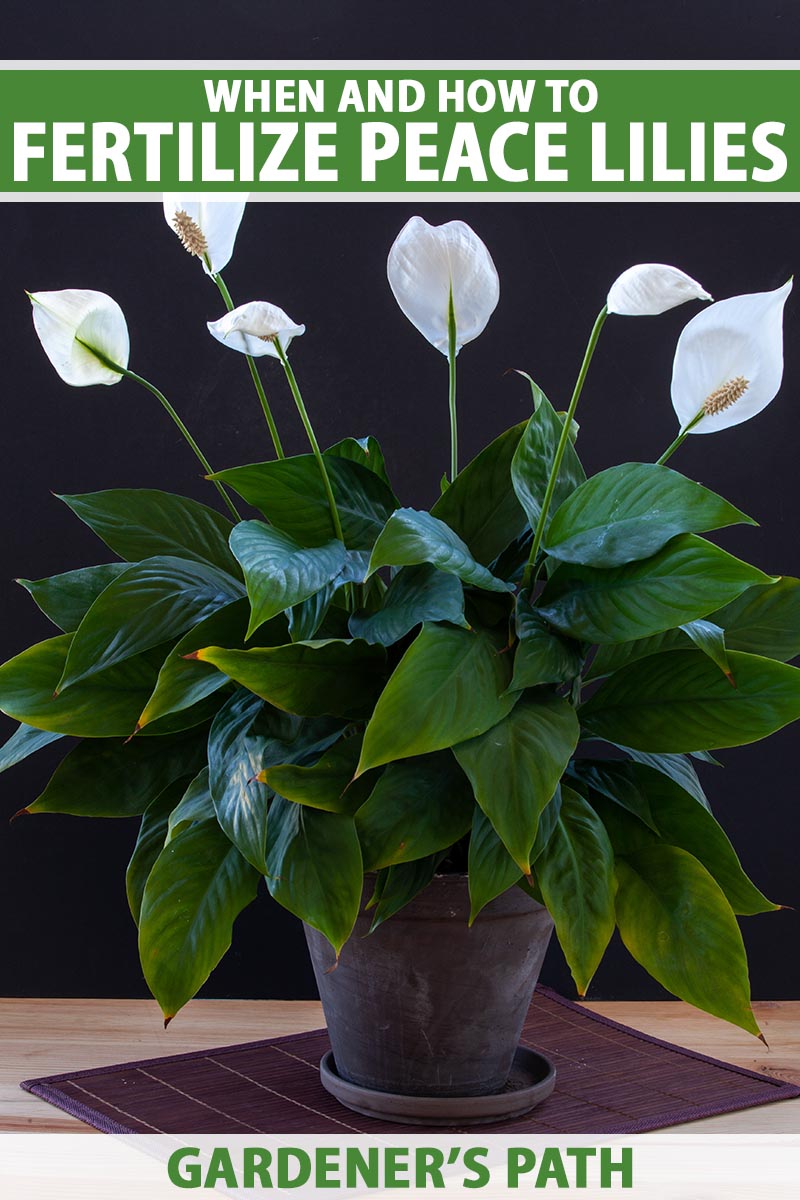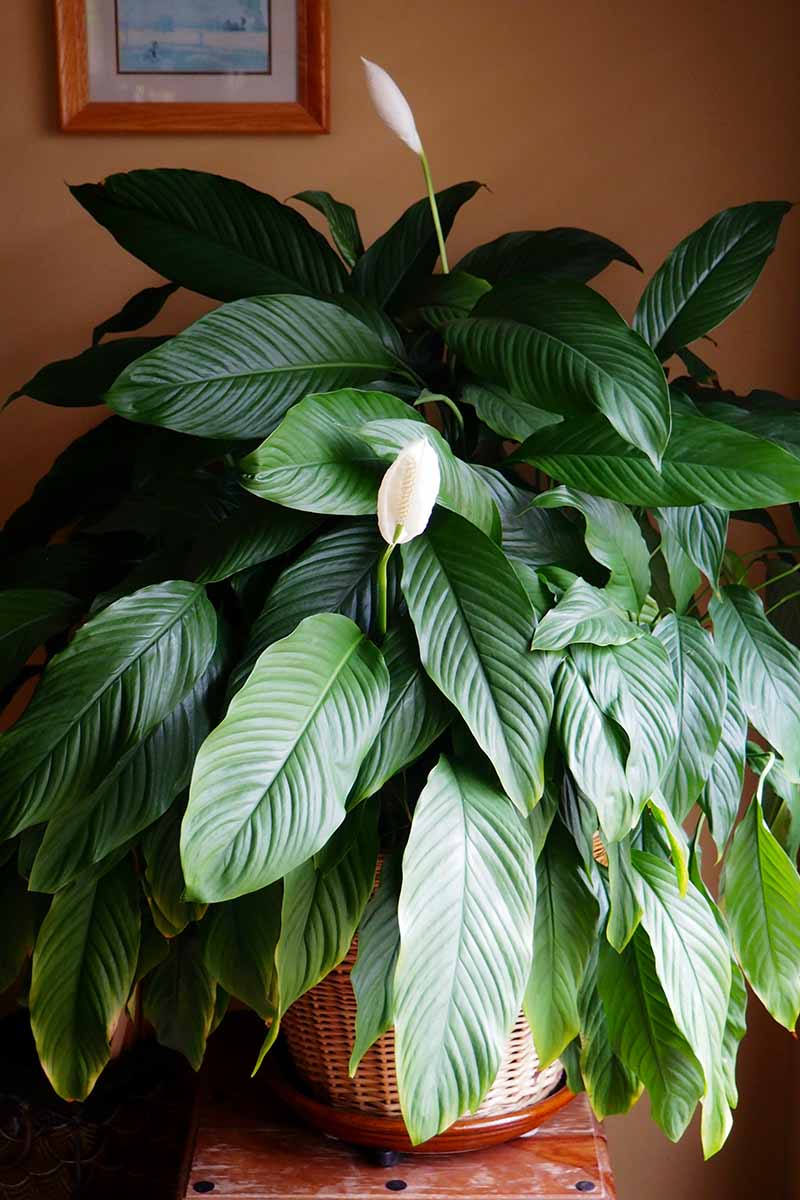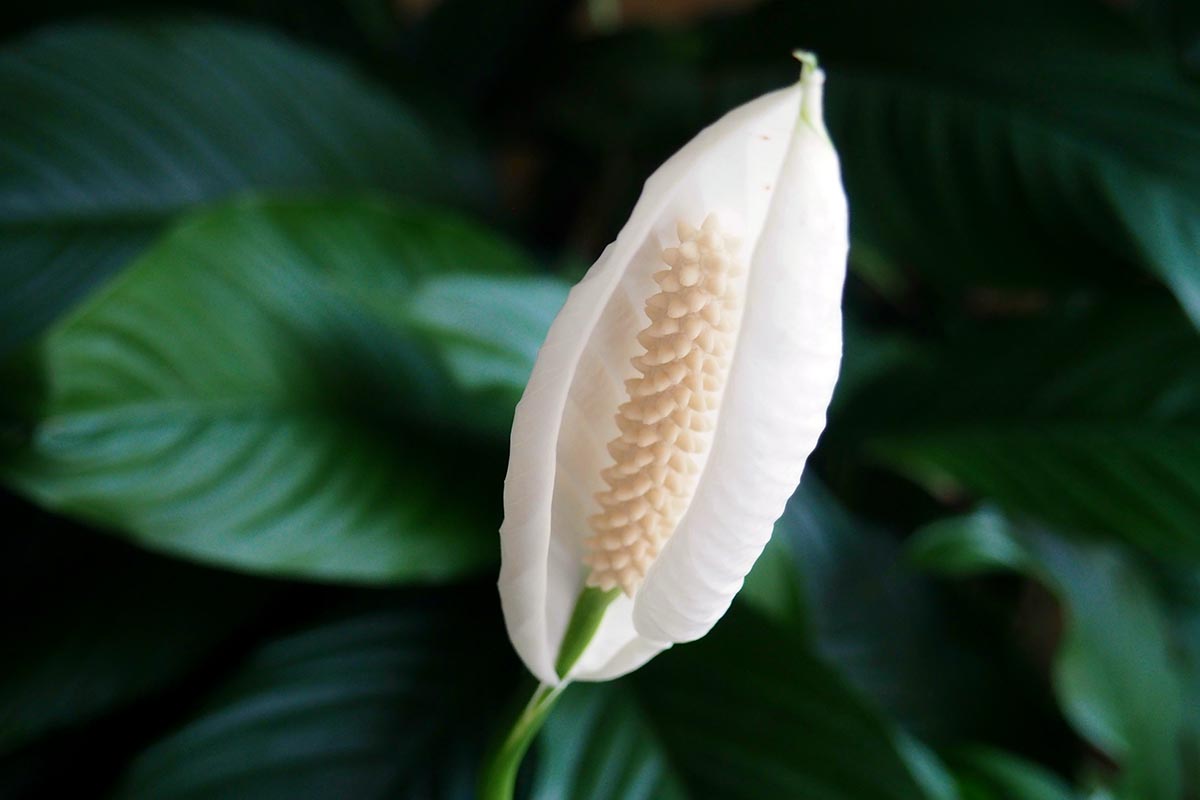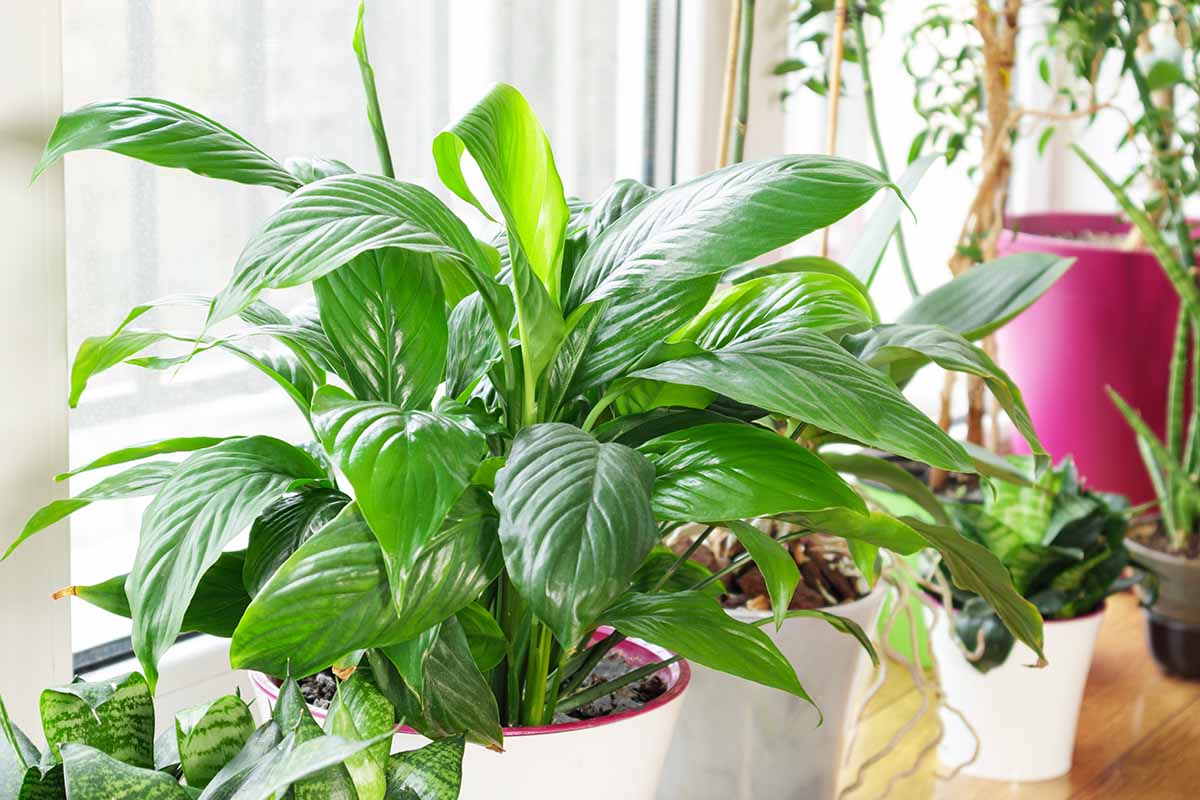But to ensure their vibrant health with plentiful spathes, they need to be fertilized throughout the growing season. We link to vendors to help you find relevant products. If you buy from one of our links, we may earn a commission. But feeding them requires a measured touch. Applying too much fertilizer can be just as bad as too little, and creates its own set of problems. To ensure your plants stay strong with plenty of “flowers,” join us now for a look at how to fertilize peace lilies.
When to Fertilize Peace Lilies
For the healthiest specimens, restrict feeding your Spathiphyllum to spring and summer, when plants are actively growing. When grown indoors, the available species and cultivars don’t go fully dormant – but the low light of autumn and winter typically slows growth to a crawl. This means plants aren’t expending much energy over winter and don’t require supplemental nutrition for growth. Nutrients added at this time often simply sit in the soil. And a buildup of mineral salts from excess fertilizer can damage roots and impact a plant’s ability to take up water. The most effective way to fertilize is to start your feeding regime when the daylight hours begin to lengthen noticeably in your area, from late winter to early spring. Then cease feeding when the days start to shorten dramatically in mid-fall. How often your peace lily will need feeding depends on the type of fertilizer used – which we’ll cover next.
Fertilizer Types and Formulas
To keep them healthy and producing plenty of attractive spathes, fertilize peace lilies with an evenly balanced fertilizer – such as 10-10-10 NPK – or one that’s slightly higher in nitrogen. In fertilizer formulas, NPK refers to the ratio of the elements of nitrogen, phosphorus, and potassium in the mix. Many houseplant formulas typically have a higher nitrogen content and support lush foliage, healthy roots, and flower bud set. To feed indoor specimens, there are three easy options – water-soluble or liquid fertilizers, slow-release pellets, and plant food spikes. Each type persists for different periods in the soil, which affects how often they need to be applied.
Liquid Products
Liquid fertilizers are easy to apply by mixing a measured amount with water, such as one teaspoon to one gallon, depending on the formulation and size of your plant or its container. Among the available types of feed, this one is absorbed the fastest. Peace lilies benefit from an immediate nutrient boost with liquid, but you have to remember to repeat applications every four to six weeks, depending on the brand.
Fertilizing Tips
Keep the following feeding tips in mind for maximum benefits: If your memory’s already maxed out, remember to log future feeding dates on a calendar or in your gardening journal. Put a note on the wall planner in the kitchen, or use your favorite mobile app to set reminders to maintain a regular schedule – your plants will love you for it! Liquid Fertilizer A suitable liquid fertilizer designed for houseplants is available at Perfect Plants Nursery in eight-ounce bottles.
Slow-Release Pellets
Slow-release pellets discharge nutrients gradually as the coating progressively dissolves. However, the slow rate of nutrient release provided by this type can mean food isn’t available when plants need it most. Slow-release pellets are the easiest of the three options described here to use – a sprinkle in early spring and again in early summer is all that’s required to fertilize plants for the entire season. Osmocote Plus Osmocote’s slow release pellets for outdoor and indoor use are available at Walmart in two-pound shaker-top bottles.
Plant Food Spikes
Plant food spikes are compressed spears of pre-measured fertilizer that are inserted into the soil at the root zone. Nutrients are slowly released as the spike dissolves. Multiple spikes may be needed for large specimens, and depending on the brand, they need to be replaced every 30 to 60 days during the growing season. Set a reminder to add replacement spikes on the first of the month to make things easy. Miracle-Gro Indoor Plant Food Spikes
Fertilizer should always be applied to moist soil for quick absorption of nutrients.For outdoor growth in USDA Zones 10 to 11, broadcast slow-release pellets in early spring and again in early summer.Water lightly after applying liquid fertilizer to ensure distribution throughout the soil to all of the roots.Avoid overfertilizing, which often shows as brown tips, yellowing leaves, or drooping.If a mineral crust forms on the surface of the soil, flush soil thoroughly with water and stop feeding until the next growing season.Repot with fresh soil if your peace lily is showing signs of mineral salt stress.
You can find repotting steps in our guide to peace lily maintenance. Keep them looking their best and producing abundant flowers with a regular feeding program during the growing months. Use a liquid fertilizer for an instant beneficial boost, or choose pellets or spikes to slowly release nutrients as they dissolve. And remember to make notes on the calendar as a reminder to feed plants when your memory bank is full! What’s your favorite type of fertilizer for houseplants? Tell us about it in the comments section below. And for more savvy tips to keep your Spathiphyllum looking good, add these guides to your reading list next:
How to Grow and Care for Peace Lilies9 Reasons Why Your Peace Lily’s Leaves Are Turning Yellow or Brown5 Reasons Why Peace Lilies May Not Bloom




